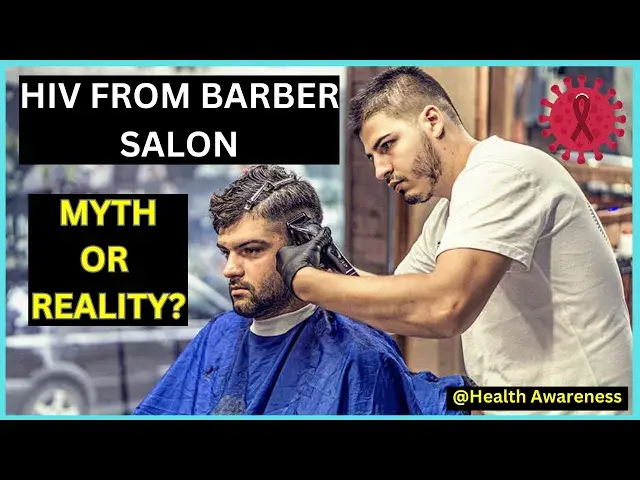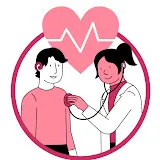0:00
there is no single answer for how long
0:02
HIV can survive outside the body such as
0:04
in dry blood or dry semen as it depends
0:07
on several factors however HIV does not
0:10
survive long outside the body and it
0:13
cannot replicate without a human
0:15
host a person can contract HIV if
0:18
damaged tissue or a mucous membrane such
0:20
as those in the rectum penis vagina or
0:23
mouth comes into contact with bodily
0:25
fluids that contain the virus only
0:28
certain bodily fluids can carry HIV
0:31
these fluids include one
0:39
Simon three pre-seminal fluid four
0:43
fluids in the rectum five fluids in the
0:47
vagina six breast milk this video
0:51
explores the factors that affect the
0:53
survival time of HIV outside the body in
0:56
different fluids it also explains how
0:59
the virus can and cannot
1:01
transmit survival time outside the body
1:05
HIV does not typically survive for long
1:08
outside the body where it cannot
1:10
replicate the virus dies quickly upon
1:12
exposure to light and air therefore
1:16
contact with dried blood or salmon from
1:18
a barbing salon Clipper or razor that
1:20
has been outside the body has a slim
1:22
chance of transmitting the virus and
1:24
does not generally pose a risk for
1:27
HIV HIV cannot survive in the air so
1:30
people cannot contract the virus from
1:31
sharing space with a person who has HIV
1:34
it is also not possible to contract HIV
1:36
from sharing toilet seats utensils or
1:39
bedding the length of time that the
1:41
virus can survive outside the body
1:43
depends on several factors such as one
1:46
the type and amount of bodily fluid two
1:50
the temperature and humidity of the
1:52
environment three the acidity of the
1:55
environment four whether there at
1:57
exposure to sunlight while the risk of
2:00
Contracting HIV from external fluids is
2:03
low the risk is high when sharing
2:05
equipment to inject drugs such as
2:08
syringes the reason for this is that the
2:10
person may inject blood that contains
2:12
HIV directly into their bloodstream
2:15
modern anti-retroviral therapies are
2:17
very effective in preventing HIV
2:19
Transmission in most cases the virus is
2:22
under control within 6 months of a
2:24
person starting this treatment once the
2:27
viral load the amount of the virus
2:29
present in the blood is undetectable
2:31
there is virtually no risk of the virus
2:33
transmitting to other people through
2:35
blood semon or other bodily
2:37
fluids HIV in blood in comparison with
2:41
other fluids blood contains the highest
2:44
concentrations of HIV the virus dies
2:46
quickly when it leaves the body so the
2:48
risk of Contracting HIV from contact
2:50
with dried blood is low in a medical
2:53
setting a person could contract HIV if
2:56
they get a cut from a blade or needle
2:58
that has been in contact with blood that
2:59
contains HIV however the risk of
3:02
Contracting HIV in this way is very low
3:05
the risk of Contracting HIV from sharing
3:07
equipment to inject drugs is very high
3:10
because a person could inject blood that
3:12
contains HIV directly into the
3:14
bloodstream the virus can survive for
3:16
longer inside a syringe than when it is
3:18
exposed to air according to the Centers
3:21
for Disease Control and prevention CDC
3:25
there is a 1 in 160 chance of
3:28
Contracting HIV from using a needle that
3:30
a person with HIV has
3:32
used HIV in Simon semen is the bodily
3:37
fluid that contains the second highest
3:40
HIV according to the HIV charity avert
3:43
it is not possible for a person to get
3:45
HIV by coming into contact with a condom
3:48
containing the sperm of a person with
3:49
the virus the speed at which HIV dies
3:53
outside a human host makes this
3:55
impossible HIV in vaginal
3:58
fluids while HIV can spread via vaginal
4:01
fluids the virus tends to exist in
4:04
smaller concentrations than it does in
4:05
Blood and semon it is not clear why this
4:08
is the case but it appears that hormones
4:10
and the types of cells in the genital
4:12
tract may play a role HIV in breast milk
4:16
breast milk contains HIV in lower
4:19
concentrations than blood or semen a
4:22
baby can contract HIV through breast
4:24
milk so the CDC recommend that people
4:26
with HIV do not breastfeed regardless of
4:29
anti- retroviral therapy or viral load
4:32
HIV can also transmit to a baby through
4:34
pregnancy or birth however this is
4:36
becoming less common with recent
4:38
developments in care if a person with
4:41
HIV is receiving effective
4:43
anti-retroviral therapy and they give
4:45
HIV medicine to the baby for 4 to 6
4:47
weeks after delivery the risk of the
4:49
baby Contracting HIV can be less than
4:52
1% how HIV can spread the most common
4:56
ways people contract HIV in the United
4:58
States are through sharing equipment
5:00
when injecting drugs and having anal or
5:02
vaginal sex without barrier
5:04
contraceptives anal sex poses a higher
5:07
risk than vaginal sex as there is a
5:08
greater chance of tissue damage although
5:11
it is less common HIV may pass to an
5:14
infant during pregnancy birth or
5:16
breastfeeding in extremely rare cases
5:18
HIV May spread if blood comes into
5:21
contact with an open wound there is a
5:23
chance of this occurring if Partners
5:24
engage in open mouth kissing and both
5:27
have bleeding gums or open sores within
5:30
however saliva that does not contain
5:32
blood cannot transmit HIV people cannot
5:36
get HIV from closed mouth or cheek
5:38
kissing people can reduce or eliminate
5:41
the chance of Contracting HIV by using
5:43
barrier contraceptives or taking
5:45
preventive HIV therapy known as
5:47
pre-exposure prophylaxis Prep Prep is a
5:51
pill that a person can take once a day
5:53
to minimize the chance of Contracting
5:55
HIV it may be helpful for those who one
6:00
HIV two have a partner with an unknown
6:03
HIV status three have multiple
6:07
partners four share needles to inject
6:11
drugs how IG cannot spread it is not
6:15
possible to contract HIV from the
6:17
following one mosquito and tick bites
6:21
two sexual activities that do not
6:24
involve the exchange of bodily fluids
6:27
masturbation three cont with a saliva
6:30
tears or sweat of a person with
6:33
HIV hugging cheek kissing or shaking
6:36
hands with someone with
6:37
HIV four sharing toilets or
6:40
Cutlery finally HIV cannot survive for
6:45
long outside the human body which means
6:47
that the risk of Contracting HIV from
6:49
dried blood or semon is low if a person
6:52
suspects that they have come into
6:54
contact with HIV in the last 72 hours
6:57
they can use an emergency prevention
6:58
method called postexposure
7:01
prophylaxis prep although inequities
7:04
exist between different regions and
7:06
populations modern anti-retroviral
7:08
therapy has made it possible for people
7:10
with HIV to live long healthy lives
7:13
without the virus transmitting to others


